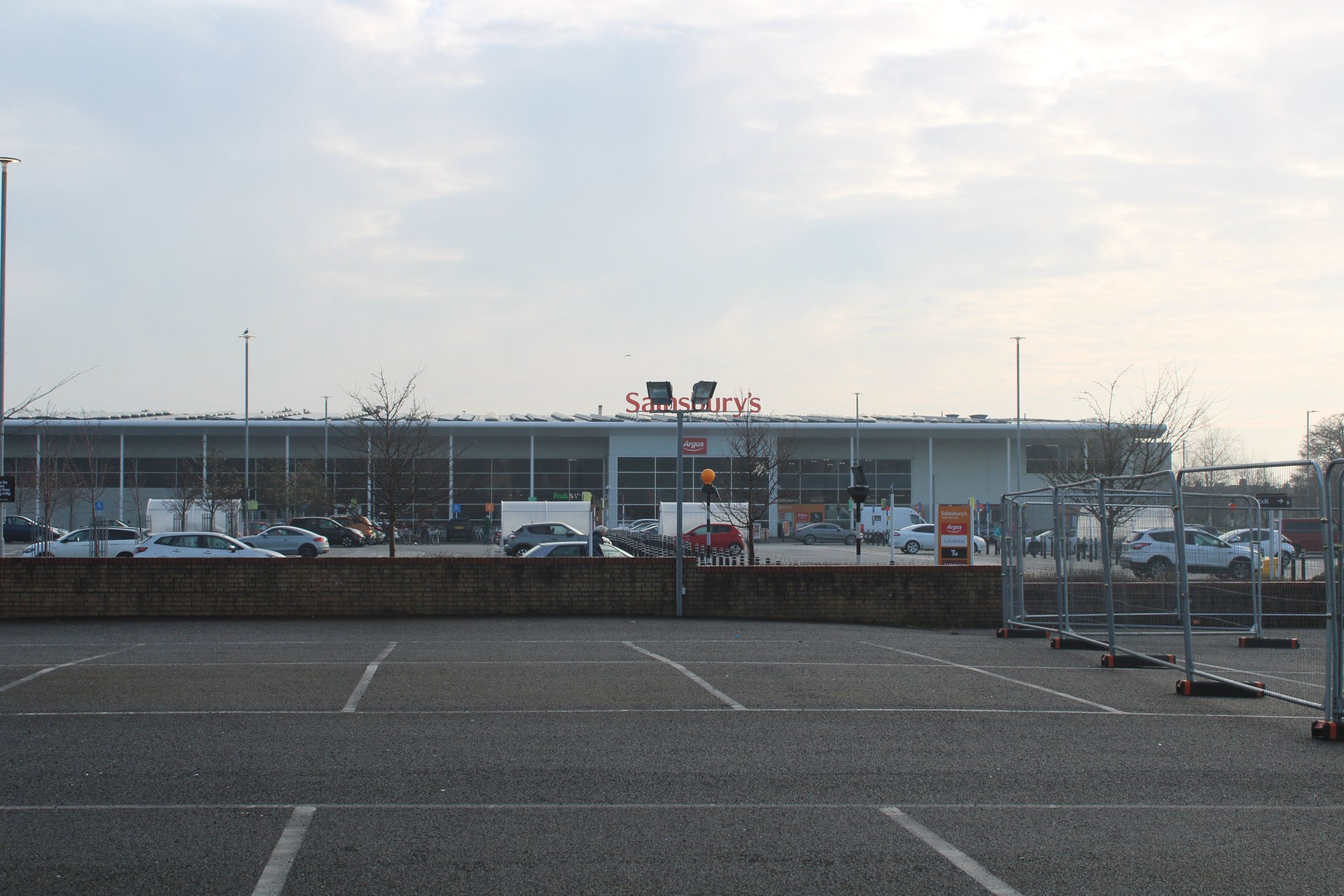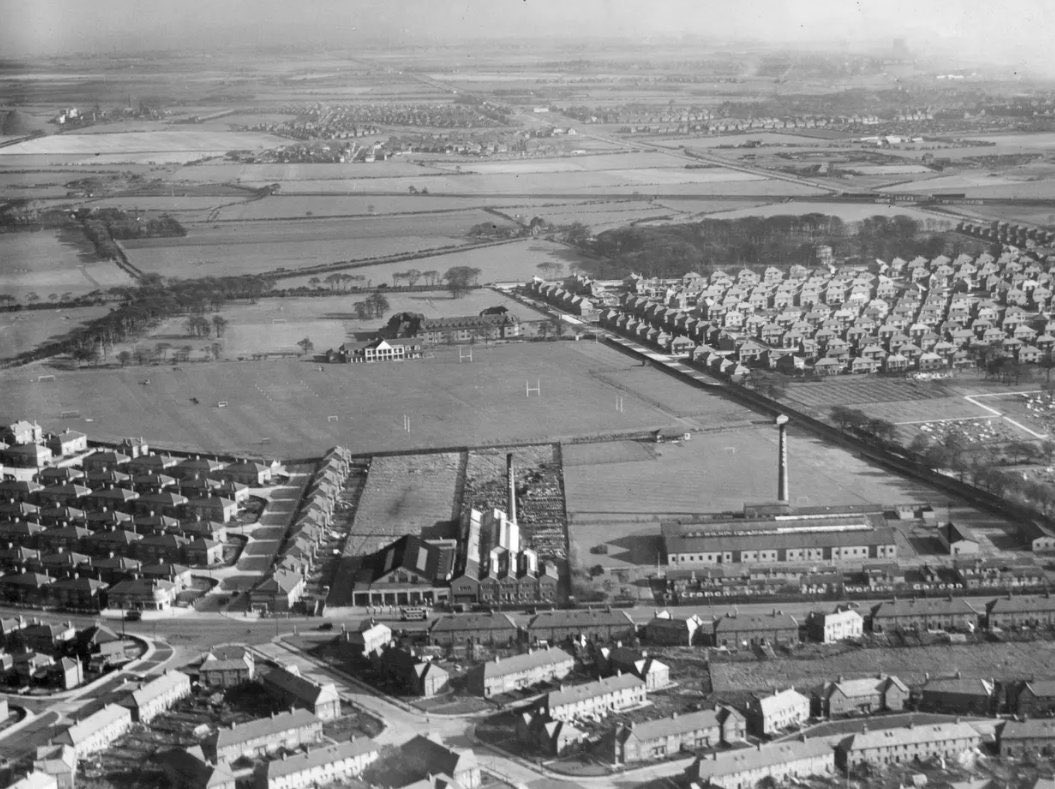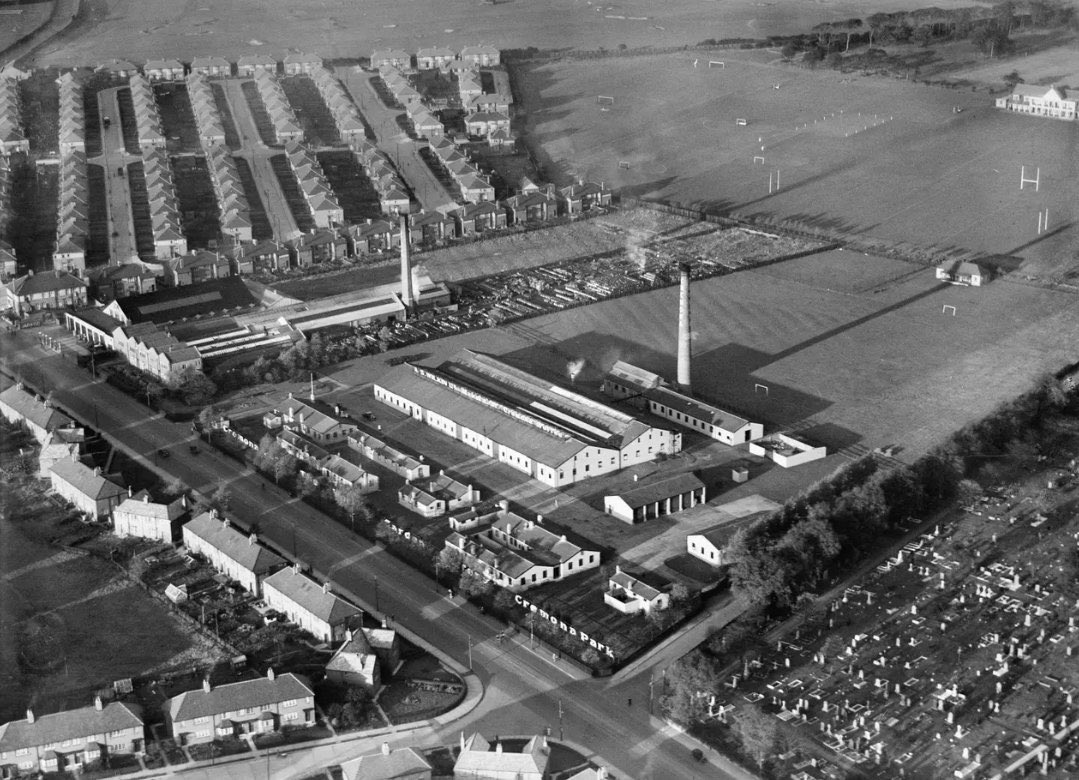
Heaton
Cremona Park
Last Updated:
10 Apr 2025
Heaton
This is a
Factory
54.996782, -1.579656
Founded in
Current status is
Redeveloped
Designer (if known):

High Heaton Sainsbury's now stands here
So, High Heaton Sainsbury’s was once a nationally recognised confectionery brand – the name of which has all but disappeared. Anyone still recognise Cremona?
This was once a big sweet factory named Cremona Park. You can gauge the site using the cemetery and Henderson Hall on the 1930s aerial shots below with its towering chimney, which was once a local landmark.
When it opened in 1920 the area was semi-rural and was the only industrial complex on the lane. They’d previously operated over at Sunderland from 1908, founded by Albert Schlock Wilkin, but probably moved here with incentives given by the mooting of the new Coast Road and the Benton Road industrial zone. It was noted as a garden factory, as huge efforts were made to uphold a high degree of working conditions and quality of the product.
Cremona’s specialty was toffee, and despite tough trading conditions after opening they blossomed in the park thanks to their modern and innovative branding. They became very well known for their tins with intricate paintings and illustrations. It helped them become instantly recognisable, and by the 1940s they had expanded next door and cemented themselves as a well-known name nationwide.
Thanks to his services to the city, the founder Albert received a knighthood and became chairman of what became Newcastle Uni. He sadly died in 1943 as a freeman of the City of London and an effective Newcastle statesman.
The factory remained here well into the ’50s, but despite international favour the dominance of the larger companies saw its death knell. By 1961, the site was being used as a garage.
Listing Description (if available)


We're turning the clocks back on this one, starting with the Ordnance Survey of 1947 back to the iteration from the 1910s. Newcastle's boundaries were really swelling in the interwar period, and these maps just accentuate that. If we use the cemetery as a reference point, we see Benton Lane was already in situ, and in fact a tram terminus, by the 1910s. However, this was the cut-off to suburbia with the top of Chillingham Road being the border to the fields between here and Benton. Even Benton Hall was still in situ, expressing the transition between it being the gentry's playground and lived in developments.

Even further back now to the 1860s when this whole area was dominated by collieries and country halls. Benton Lane remained a main thoroughfare from north to south, though what we know as Etherstone Avenue was Dark Lane - perhaps a nod to the Heaton High Pit. Benton Colliery was also still operating along the Coxlodge Waggonway just to the north, which had been cleared by the 1890s.

The site of Cremona Park in March 2025

Cremona Park, with its towering steaming chimney, in 1938. You'll notice the sports ground directly behind. Source: © Historic England. Aerofilms Collection EPW060135 flown 1 November 1938

© Historic England. Aerofilms Collection EPW059902 flown 8 October 1938
